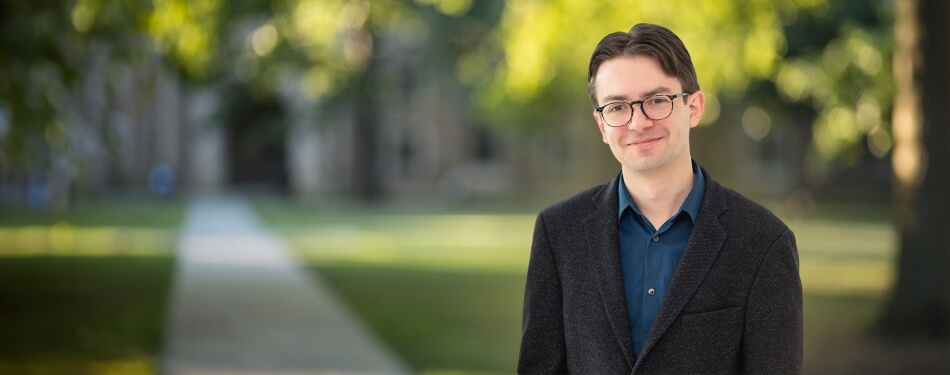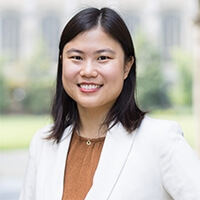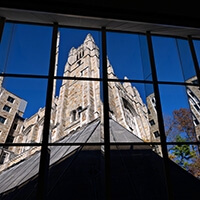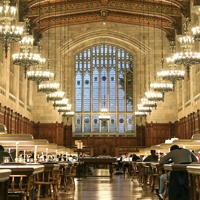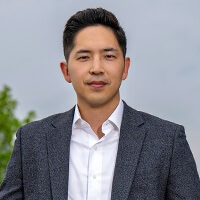While Guus Duindam, ’21, was a law student, he would often hear that working as a law clerk is the best job you’ll ever have. At the time, he and his classmates were somewhat skeptical, but now—with two federal clerkships under his belt and a Supreme Court clerkship for Associate Justice Sonia Sotomayor about to begin—he fully agrees with the claim.
“It’s really true,” he said, “because you learn more than you can in any type of practice in a short period of time. I don’t know how you could get the same amount of practical knowledge about the legal system any other way in that one year.”
Following law school, Duindam served as a clerk for a pair of Michigan Law alumni: First, he interned and then clerked for the Hon. Judith E. Levy, ’96, on the US District Court for the Eastern District of Michigan. The next year, he clerked for the Hon. Raymond Kethledge, ’93, on the US Court of Appeals for the Sixth Circuit.
Currently, he is an associate for Wilkinson Stekloff in Washington, DC, a boutique firm that offered the opportunity for hands-on trial work.
Come July, however, Duindam will take on one more clerkship opportunity: serving as one of Justice Sotomayor’s four clerks. The 2024–2025 term will mark the sixth consecutive term that a Michigan Law graduate has clerked for the high court—and a seventh alumnus, Jacob Altik, ’21, will continue the streak in 2025–2026.
Laying the groundwork
Duindam earned a BA from Illinois College before coming to Michigan, where he earned a joint JD/PhD in philosophy. At the Law School, he served as an articles editor for the Journal of Law Reform, and he volunteered as a student-attorney for the Workers Rights Clinic (now known as the 1L Advocacy Clinic), representing clients in administrative trials and in appeals before the Michigan Court of Appeals and Michigan Supreme Court.
Today, Duindam often finds himself referring back to issues that came up in Law School classrooms. “The fun thing about law is that you’re essentially using the tools of a philosopher in very practical situations. That’s what really attracted me to law,” he said.
“A philosopher deconstructs arguments and figures out what somebody really meant. And then, if I think it’s wrong, why? Those are traits that a lawyer also needs to have. That’s a skill that has really helped me.”
The path to the Supreme Court
Duindam found his first two clerkships to be valuable learning experiences: “It’s so useful to put yourself in the mindset of the judge. It really changed my approach to writing and arguing. Because you’ve been there now—You’ve read those briefs and you’ve got to figure out, okay, who’s right?”
He also found value in his experience clerking for two judges on different ends of the ideological spectrum. “I really enjoyed working with a team of clerks who all had very different views of things. That’s one way I learned the most. It made me a more well-rounded lawyer,” he said.
Toward the end of his second clerkship, Duindam got serious about applying to the Supreme Court. He says that Judge Kethledge helped a great deal with the process, as did the Michigan Law community—especially Greta Trakul, the Law School’s director of clerkship advising; Professor Richard Friedman, who wrote a recommendation for him; and Professor Leah Litman, ’10, who previously clerked on the Supreme Court for Justice Anthony Kennedy and helped with interview preparation.
“One of the best parts of our jobs is when we have the chance to help students and alums get the opportunities that they deserve,” said Litman, who heads the faculty clerkship committee along with another former Justice Kennedy clerk, Professor Christopher Walker. “Landing a Supreme Court clerkship with Justice Sotomayor is extremely tough because it’s so competitive and a bunch of things have to fall into place for it to happen. We couldn’t be happier that it worked out for Guus.
“We are extremely proud of all our fantastic students and alums, and in this case we are also very grateful to the judges Guus previously clerked for, both of whom are also alums and made this opportunity possible.”
Looking ahead
Now, Duindam is preparing to pivot from private practice to the nation’s highest court. Before long, he will be sorting through petitions to figure out which are cert worthy and then writing recommendations. Once the Court’s term starts, he will also work on drafting memos and opinions.
Duindam has two pieces of advice for any law student: Take the classes that truly interest you, and consider a clerkship.
“It really is an incredible experience, both in terms of what you will learn and in the relationships you develop with the judge and your co-workers,” he said.
“At the appellate level, I learned so much about substantive legal issues, but also how to think like an appellate judge,” he continued. “At the Supreme Court, there are fewer constraints on the solutions to a problem. There are more possibilities for the right outcome to a case. It will be incredibly interesting to watch this process unfold and try to think like a Supreme Court justice, so that I can turn around and persuade them someday.”

